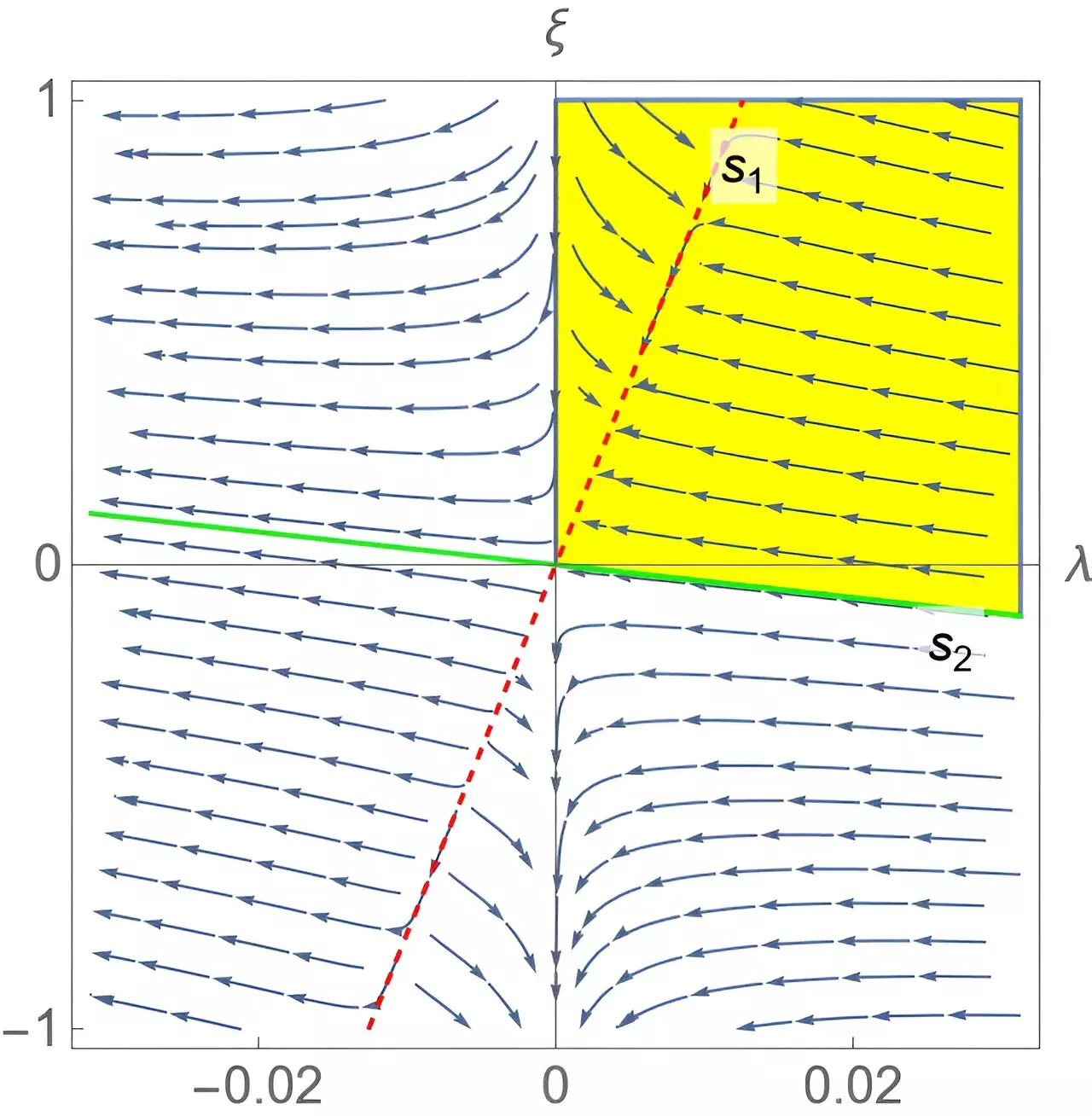The fabric of our universe is interwoven with the principles of gravity, yet understanding this fundamental force remains one of the most significant challenges in modern physics. Traditional theories such as Einstein’s general relativity provide us with a framework for understanding gravity on macroscopic scales. However, when transitioning to the quantum realm, these classical theories often fall short, leaving physicists struggling to reconcile the two worlds. A recent study from researchers at the International School for Advanced Studies in Trieste, the University of Massachusetts, and the Instituto de Física Teórica at Universidade Estadual Paulista in Brazil offers a new door into this complex landscape—an innovative approach to quadratic gravity that could lead to a more comprehensive understanding of gravitational phenomena.
The Innovative Concept of Quadratic Gravity
Quadratic gravity expands on the traditional principles established in general relativity by incorporating quadratic terms of curvature into the Einstein-Hilbert action. This idea is not merely an academic exercise; it holds the potential to address some of the shortcomings seen in both classical and quantum theories of gravity. John Donoghue, one of the lead authors of the recent paper published in *Physical Review Letters*, emphatically states that quadratic gravity is a contender that could effectively describe gravitational interactions across all scales. His ambitious view draws on the versatility of this theoretical framework, which may eventually bridge essential gaps in our understanding of the universe.
As scientists like Donoghue and his colleagues have explored the intricacies of coupling constants in more established theories, they are beginning to shift the focus toward the enigmatic parameters in quadratic gravity. By employing beta functions—mathematical tools that track the changes in these couplings with energy variations—they aim to unlock new insights into the mysterious realms of quantum gravity. The implications of their findings could redefine how physicists approach high-energy gravitational interactions, fostering a better understanding of both the microscopic and macroscopic behaviors governed by gravity.
Understanding the Flow of Coupling Constants
In quantum field theory, coupling constants dictate the strength of interactions among various particles. However, as energy is introduced into a system, these constants evolve—a phenomenon referred to as the “running” of coupling constants. Donoghue stressed the importance of accurately understanding these transformations, as they can reveal how a theory behaves when subjected to extreme energy conditions.
The challenge arises when existing techniques do not yield consistent results in the framework of quadratic gravity, an issue that Donoghue and his team addressed through the introduction of novel methodologies. Their work aims to harmonize previously disparate findings, offering a coherent understanding of coupling behavior under varying energy levels. The research promises a paradigm shift in how physicists perceive the energy landscape of gravity, particularly its capacity to yield stable descriptions of gravitational interactions.
The Promise of Asymptotic Freedom in Quadratic Gravity
A key insight from their research is the striking potential for the coupling constants in quadratic gravity to approach vanishingly small values at high energy levels—an attractive feature known as asymptotic freedom. This characteristic suggests that rather than becoming convoluted or unstable at heightened energies, the theory may stabilize, providing a reliable framework for exploring extreme gravitational phenomena without encountering the troublesome tachyons—hypothetical particles predicted to lead to instability within a particle spectrum.
Such perspectives invite a radical reevaluation of how we engage with gravity. If quadratic gravity allows for stable interactions even in high-energy scenarios, then not only do we gain theoretical clarity, but we also set the stage for grappling with some of the universe’s most perplexing questions, from black holes to the behavior of gravitational waves.
A Broader Framework of Exploration
Emphasizing this evolving understanding, Donoghue notes the peculiarities inherent within quantum gravity models like quadratic gravity. This indicates that while the current research highlights significant advancements, the journey toward unraveling the complexities of gravitational theories is far from complete. By diving deeper into the unusual characteristics of quadratic gravity as it fits within the broader tapestry of quantum field theories, researchers hope to foster an environment ripe for further discovery and elucidation.
The techniques developed by Donoghue, Menezes, and their colleagues could have lasting implications, paving the way for further investigations not just into the nuances of coupling constants but also into the underpinnings of gravitational phenomena that have remained largely elusive. A strong grasp of the high-energy behavior and the analytic structures surrounding scattering amplitudes in quadratic gravity could catalyze groundbreaking developments in our theoretical frameworks, fundamentally altering our comprehension of the cosmos.

